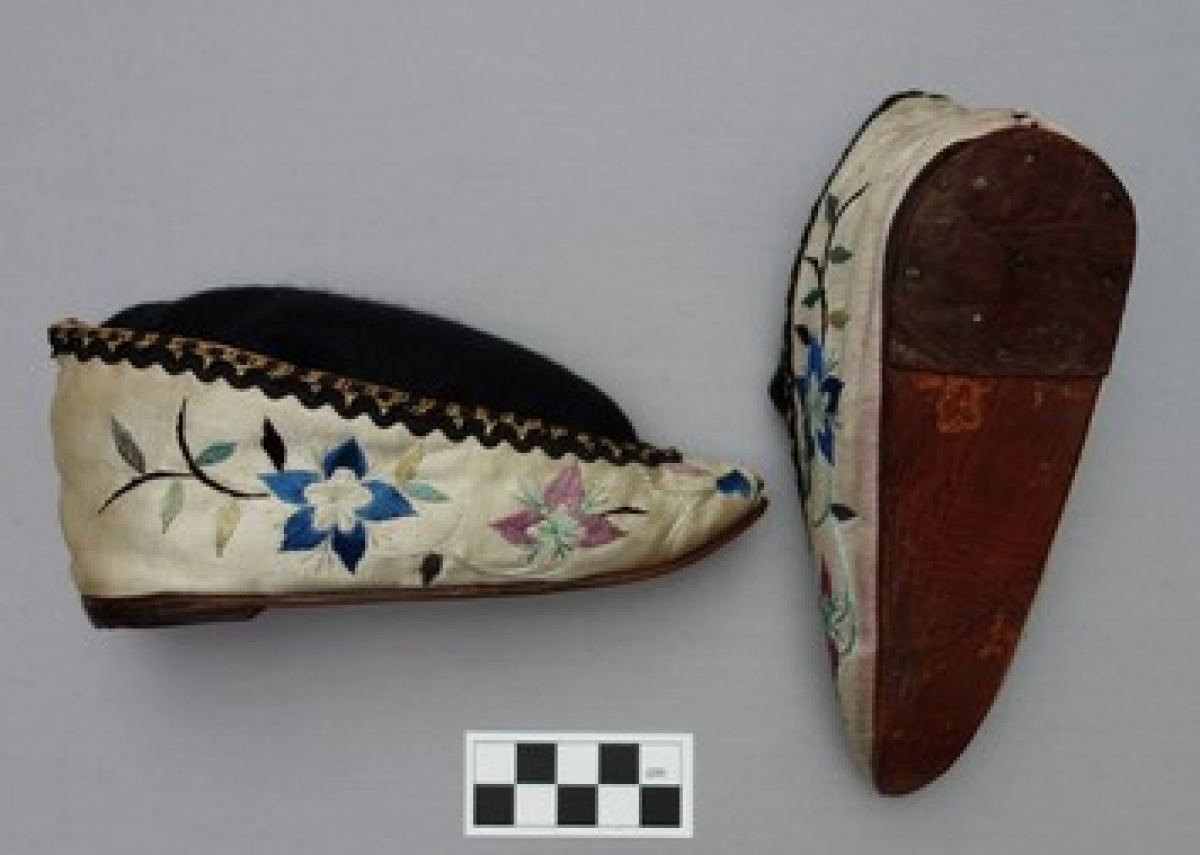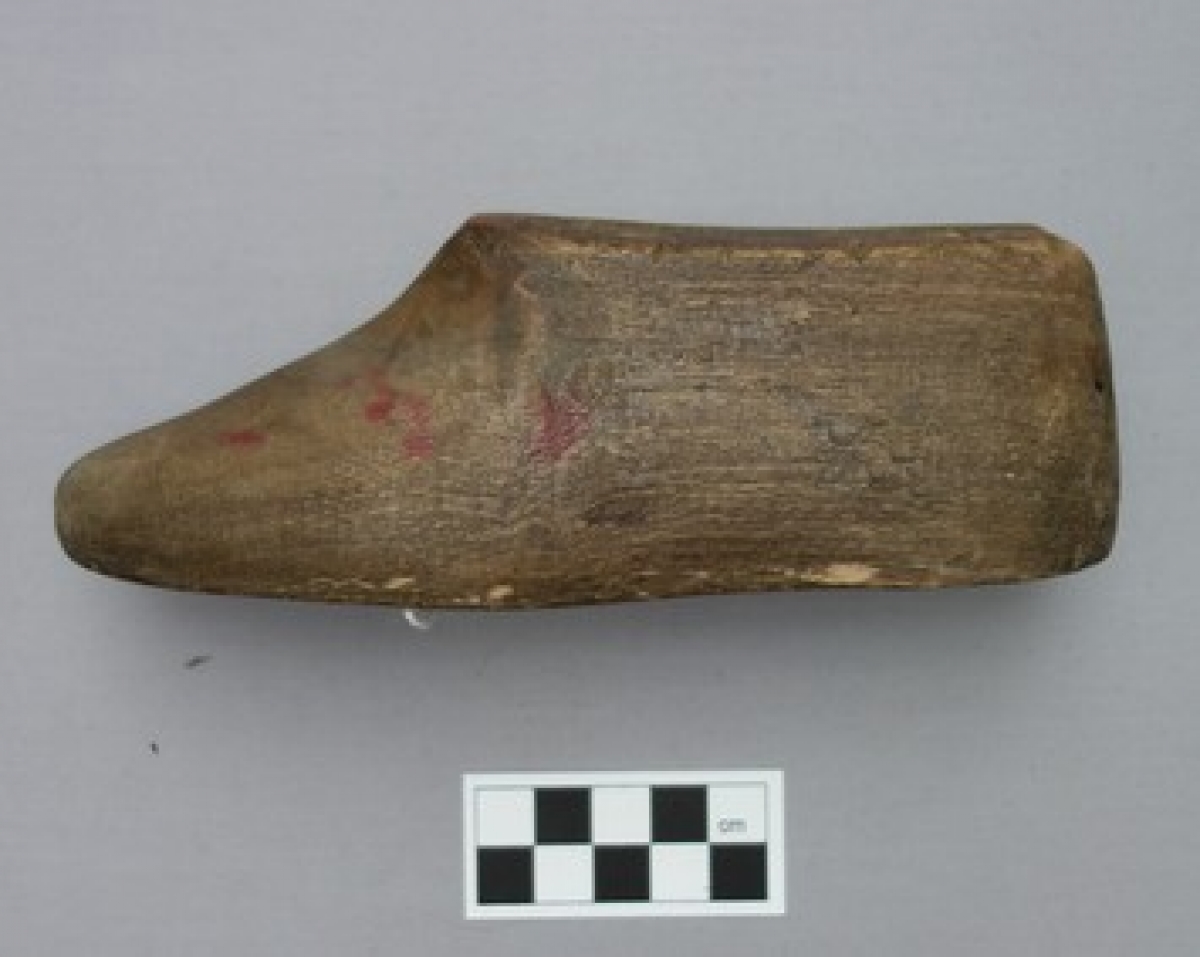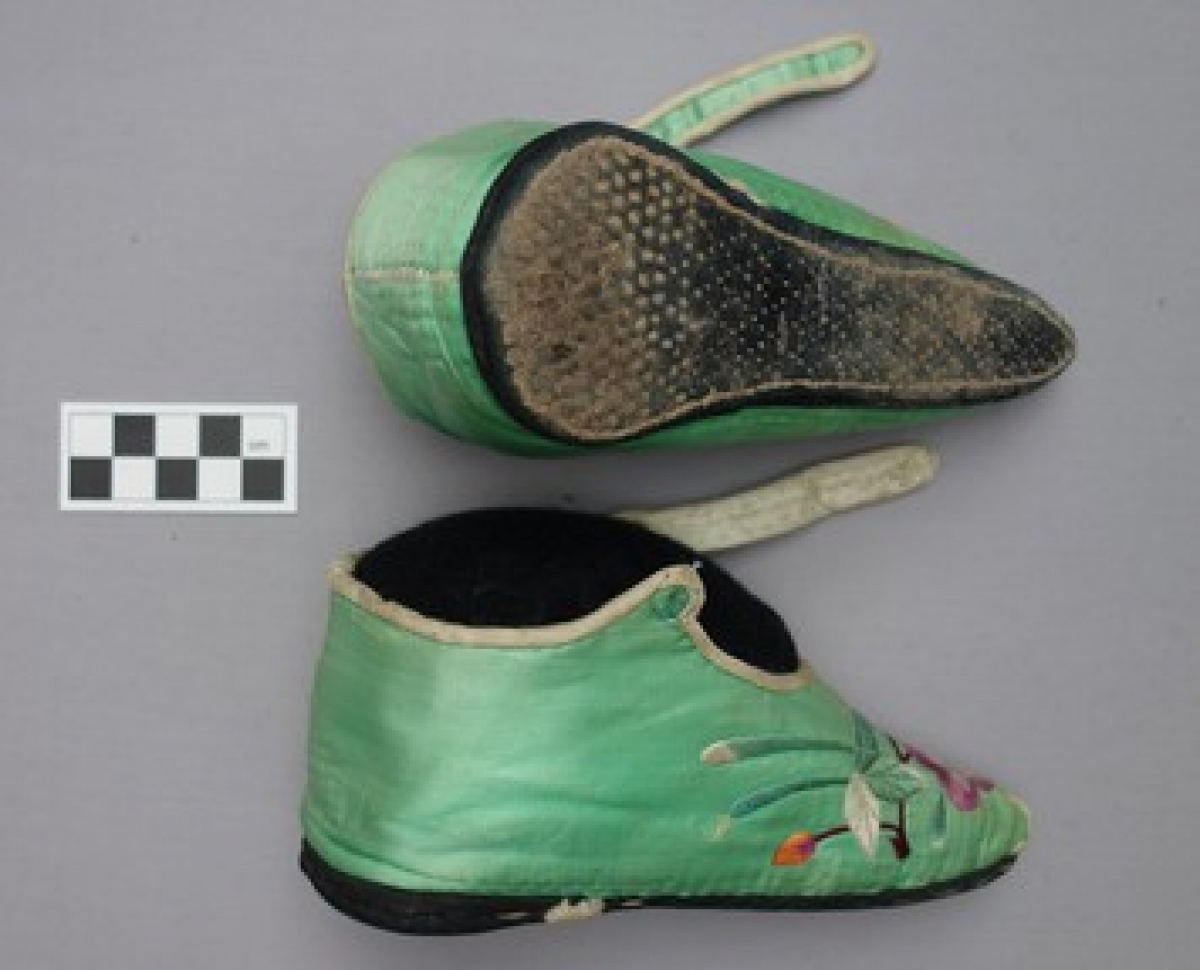Chinese Lotus Shoes
Chinese lotus shoes
Lotus shoes worn by Chinese women with bound feet represent an intriguing, beautiful and yet at the same time a hideous and deforming aspect of many women’s lives for nearly 1000 years. The examples now in the TRC Collection formed part of an exhibition about the history of footwear, which was staged at the TRC Leiden in 2012.
These tiny shoes (sometimes as small as 6 cm) and related items form part of a larger study concerning dress and identity and how people (both men and women) use their bodies to stress their gender,, marital, social, economic and indeed political status. Lotus shoes encompass all of these subjects and many more.
The following titles provide a good introduction to the fascinating subject of lotus shoes and foot binding. You will find references to other publications in the titles below.
- Beverley Jackson (1997). Splendid Slippers: A Thousand Years of an Erotic Tradition, Berkeley: Ten Speed Press.
- Susanna Goho-Quek (2004). Kecantikan : Bengkung Kaki: The Allure of the Bound Foot, Kuala Lumpur: Department of Museum and Antiquities.
- Dorothy Ko (2001). Every Step a Luts: Shoes for Bound Feet, Berkeley, Los Angeles, London: University of California Press, The Bata Shoe Museum.
- Glenn Roberts and Valerie Steele (1997). "The three-inch golden lotus: A collection of Chinese bound foot shoes", Arts of Asia, 27, no. 2, pp. 69-85.
- Ping Wang (2000). Aching for Beauty: Footbinding in China, Minneapolis: University of Minnesota Press.
- Linda Wrigglesworth (1996). The Sway of the Golden Lotus: An Exhibition of Manchu and Bound Feet Shoes worn by Chinese Children and Women in Imperial China. Qing Dynasty 1644-1911, London: Linda Wrigglesworth, Ltd.
For this online exhibition:
- Author: Gillian Vogelsang-Eastwood
- Web-design: Joost Koopman
- Exhibition design: Willem Vogelsang
- Publisher: TRC Leiden.
- Year of publication: 2018
- Copyright: All illustrations of objects housed in the TRC collection can be used free of charge, but please add to the caption: "Courtesy Textile Research Centre, Leiden" and the pertinent accession number of the object.












